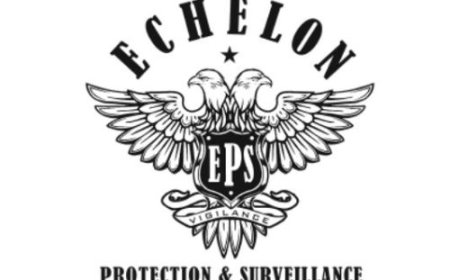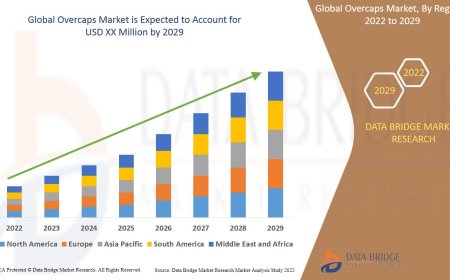Web 3.0 Marketing Strategies: Engaging Communities in Decentralized Ecosystems
Build crypto trust through KOL marketing. Learn tactics to connect, educate, and grow your Web3 project with authentic, targeted influencer strategies. Build crypto trust through KOL marketing. Learn tactics to connect, educate, and grow your Web3 project with authentic, targeted influencer strategies. Explore how brands can build trust and drive growth through community-focused, token-based marketing in decentralized Web 3.0 ecosystems.

Web 3.0 has emerged as more than just a technological upgrade, it's a cultural and economic shift redefining how people interact, transact, and engage in digital ecosystems. Unlike traditional online platforms that centralize control, Web 3.0 promotes decentralization, privacy, and user ownership. As a result, the rules of digital marketing are being rewritten. Brands that once thrived on third-party data, mass targeting, and algorithmic reach now find themselves navigating a landscape where communities are gatekeepers and engagement is earned, not bought. In this new era, marketing is no longer a one-way broadcast; its an ongoing conversation where trust, transparency, and collaboration dictate success. Understanding and applying effective Web 3.0 marketing strategies is essential for brands seeking to build authentic, long-term relationships within decentralized ecosystems.
Understanding Web 3.0 and Its Impact on Marketing
Web 3.0 refers to the next generation of the internet, powered by blockchain technology, decentralized networks, and token-based economies. Unlike Web 2.0, where users generated content but had little control over their data or online identity, Web 3.0 Marketing prioritizes ownership, transparency, and trustless interactions. These principles profoundly impact how marketing is executed and measured.
-
Decentralized Platforms and Protocols
Traditional marketing strategies that depend on centralized platforms are less effective in Web 3.0. Instead, decentralized platforms like Lens Protocol or Farcaster encourage marketers to rethink how and where they reach audiences. -
Elimination of Intermediaries
Without central authorities or middlemen, brands interact directly with users. This disintermediation promotes trust but demands a higher level of engagement and transparency from marketers. -
Token-Based Incentives and Governance
Tokens allow communities to participate in governance and brand development. Marketing becomes less about messaging and more about creating value that token holders want to support. -
Shift from Audience to Community
In Web 3.0, users are not passive recipients of content. They are active participants, often co-creators, which changes the entire tone and structure of marketing campaigns.
Building and Nurturing Decentralized Communities
Community is the foundation of successful Web 3.0 marketing. Without centralized platforms dictating distribution, brands must rely on grassroots support and organic engagement from tightly knit communities. Building trust, offering value, and maintaining ongoing conversations are key elements in nurturing these groups.
-
Create Spaces for Dialogue and Feedback
Using platforms like Discord, Telegram, or community-run forums fosters real-time communication and feedback loops. These spaces allow users to voice opinions and feel included in the brand's direction. -
Reward Participation and Loyalty
Token airdrops, NFTs, and community bounties incentivize users to contribute, share, and promote the brand. These mechanisms create a sense of ownership and pride among participants. -
Host Community Events and Activations
AMAs, hackathons, voting proposals, and virtual meetups strengthen community bonds and make members feel like active stakeholders rather than just consumers. -
Empower Brand Ambassadors
Loyal users can be turned into advocates through ambassador programs. Offering tokens or exclusive perks helps them promote the brand authentically and organically within their circles.
Token-Driven Engagement Strategies
Tokens are not just digital assets; they are powerful engagement tools in decentralized ecosystems. Whether fungible or non-fungible, tokens can be used to align incentives, recognize contributions, and unlock access to exclusive experiences.
-
Access Through Token Ownership
Tokens can serve as keys to gated communities, events, or premium features. This model enhances exclusivity and incentivizes users to hold or acquire tokens for access. -
Gamified Participation Models
Introducing quests, leaderboards, or staking competitions encourages consistent community involvement. These systems reward users for taking specific actions that help the brand grow. -
Contribution-Based Rewards
Brands can allocate tokens to contributors based on merit. Whether someone writes content, creates designs, or reports bugs, rewarding these contributions fuels participation. -
Token Voting and Decision Making
Letting users vote on product features, branding elements, or partnerships gives them a stake in the outcome. This increases retention and community alignment with brand goals.
Content Creation and Distribution in Web 3.0
Content remains a critical part of Web 3.0 marketing, but the way it is created, distributed, and consumed is radically different. Control is decentralized, and value comes from meaningful engagement rather than passive impressions.
-
Use Decentralized Publishing Tools
Platforms like Mirror.xyz or IPFS allow content to live on-chain or across distributed networks, ensuring permanence, censorship resistance, and authenticity. -
Embrace Community-Generated Content
Community-created blogs, memes, tutorials, and reviews reflect authentic voices and help scale brand visibility without centralized control or high advertising spend. -
Educate to Empower
With Web 3.0 being a complex and evolving space, educational content adds significant value. Brands that explain concepts clearly and honestly position themselves as trusted leaders. -
Leverage NFTs for Content Distribution
Unique content like art, music, or educational resources can be distributed as NFTs, allowing creators to retain ownership while building exclusivity and fandom.
Collaborating with DAOs and Aligned Projects
Decentralized Autonomous Organizations (DAOs) are emerging as essential partners in the Web 3.0 marketing landscape. They represent collective user groups with governance rights and influence, making them ideal collaborators for expanding reach and credibility.
-
Proposal-Based Partnerships
Brands can submit proposals to DAOs for joint ventures, sponsorships, or co-branded events. These proposals are voted on by DAO members, ensuring community buy-in. -
Shared Value Campaigns
Co-marketing with aligned DAOs or blockchain projects enables brands to tap into existing communities while offering mutual benefits. It's a win-win when incentives are aligned. -
DAO Tools and Grant Programs
Many DAOs offer grants or marketing tools to build their ecosystems. By aligning brand goals with DAO missions, marketers can access both funding and legitimacy. -
Community-First Branding Initiatives
Successful DAO collaborations often prioritize mission alignment over profit. Brands must genuinely support the DAOs values to build long-lasting partnerships.
Privacy-First Data Strategies and Analytics
In Web 3.0, users control their data, forcing marketers to shift from invasive tracking to consensual data exchanges and transparent measurement methods. Analytics still matterbut now they must respect user sovereignty.
-
Opt-In Data Collection Practices
Users should explicitly grant permission to use their data in exchange for value. For instance, surveys or feedback forms can offer token incentives or exclusive content. -
On-Chain Activity as an Insight Tool
Marketers can analyze wallet transactions, token holdings, and smart contract interactions to understand user behavior, all while respecting anonymity. -
Use Privacy-Focused Analytics Platforms
New tools like Composable Analytics or Dune Analytics offer insights without compromising personal data. They allow visibility into user journeys while maintaining user rights. -
Reward Data Sharing Transparently
Offering benefits for data sharing, like enhanced features or airdrops makes users more willing to participate. The key is transparency and mutual value.
Overcoming Challenges in Web 3.0 Marketing
Marketing in Web 3.0 isnt without its hurdles. The decentralized nature of the ecosystem presents unique operational, technological, and trust-related challenges that marketers must be prepared to address strategically.
-
Educating a New User Base
Many users are still unfamiliar with concepts like wallets, DAOs, or NFTs. Simplifying onboarding and offering user-friendly tutorials can help bridge the gap. -
Managing Volatility and Scams
The crypto space is volatile and sometimes plagued by fraud. Building long-term trust through consistent communication and transparent operations is crucial. -
Limited Mainstream Tools and Integrations
Many traditional marketing tools dont yet integrate well with Web 3.0 platforms. Custom analytics dashboards or third-party Web3-native tools may be required. -
High Expectations of Authenticity
Communities in Web 3.0 are sensitive to insincerity. Brands must engage honestly, own their mistakes, and prioritize long-term value over short-term gain.
Conclusion
Web 3.0 is fundamentally reshaping how brands connect with people. In this decentralized landscape, community engagement, token incentives, and transparency are more than strategies; they are necessities. Marketers must transition from one-sided campaigns to participatory ecosystems, where success is co-created with users rather than dictated to them. By understanding the values and mechanics of decentralized platforms, brands can build genuine relationships, harness collective creativity, and foster lasting loyalty. Web 3.0 marketing is not about reaching an audience; its about becoming part of a community, and that begins with trust, value, and collaboration.







































